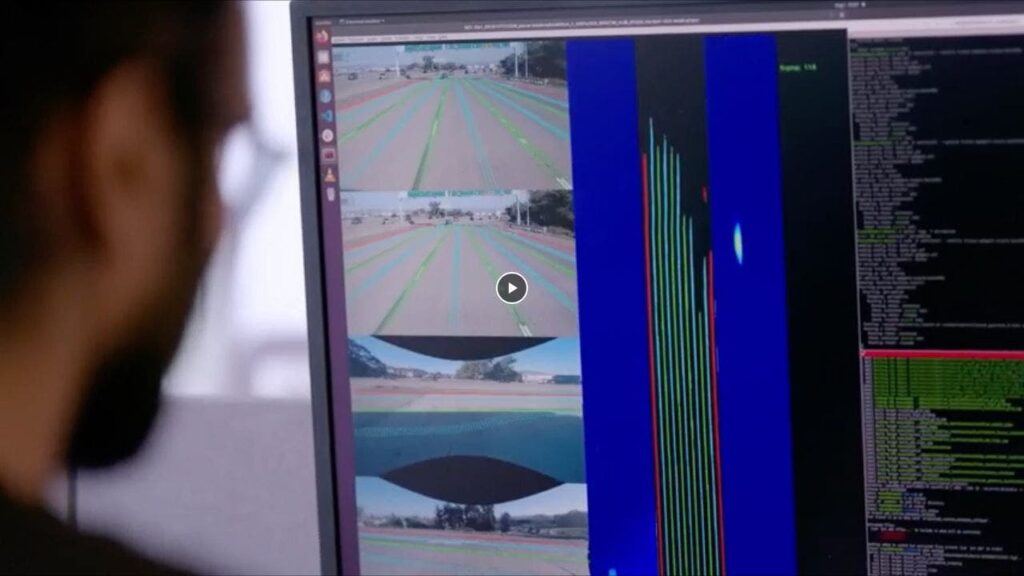
NEWYou can now listen to Fox News articles!
Artificial intelligence-powered self-driving trucks are no longer a distant concept. They are quickly becoming a real solution to some of the logistics industry’s biggest challenges. As supply chains face growing pressure and the driver shortage deepens across the U.S. and Europe, Plus Automation is stepping up with bold ambitions and powerful AI.
Recently, the Santa Clara, California-based startup announced it will go public through a merger with Churchill Capital Corp IX. The combined company will operate as PlusAI, which describes itself as a Physical AI company commercializing AI-based virtual driver software for autonomous trucks.
While the SPAC merger is a major milestone, at the heart of this deal is Plus’ goal of driving the future of autonomous freight and reshaping the trucking industry, even as concerns around safety, regulation and driver jobs continue to spark debate.
Sign up for my FREE CyberGuy Report
Get my best tech tips, urgent security alerts, and exclusive deals delivered straight to your inbox. Plus, you’ll get instant access to my Ultimate Scam Survival Guide — free when you join.
DRIVERLESS BIG RIG ROBOTRUCKS ARE NOW ON THE ROAD IN THIS STATE
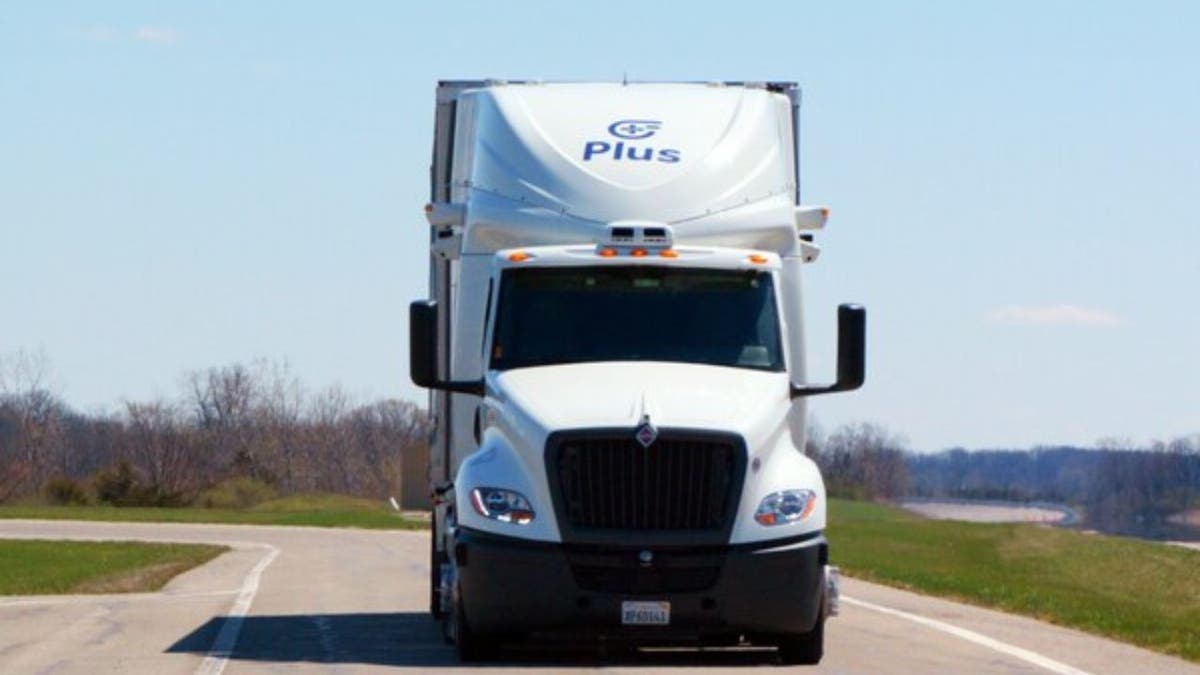
Self-driving truck (Plus Automation)
Why Plus is grabbing attention in the trucking world
Trucking is a $2 trillion freight market in the U.S. and Europe alone, and it faces some serious headwinds. There is a growing shortage of drivers, rising costs, and relentless demand for faster deliveries. Plus’s SuperDrive software is designed to address these pain points by enabling safe, scalable autonomous trucking. The technology is not just theoretical. It has already been tested over five million miles across the U.S., Europe, and Asia, gathering real-world data to make its AI smarter and more reliable with every trip.
Founded in Silicon Valley in 2016 by engineers and entrepreneurs with deep roots in AI and machine learning, Plus has always aimed to do things differently. Instead of relying on hand-coded rules, Plus uses advanced AI models to create a « driving intelligence » that learns and adapts from every mile on the road. This AV 2.0 approach helped Plus achieve a major safety milestone in April 2025, when its SuperDrive system successfully completed « driver-out » validation. The truck operated autonomously without a human behind the wheel. Plus is currently running public road tests in Texas and Sweden, with more fleet trials coming soon.
HOW TO LOWER YOUR CAR INSURANCE COSTS IN 2025
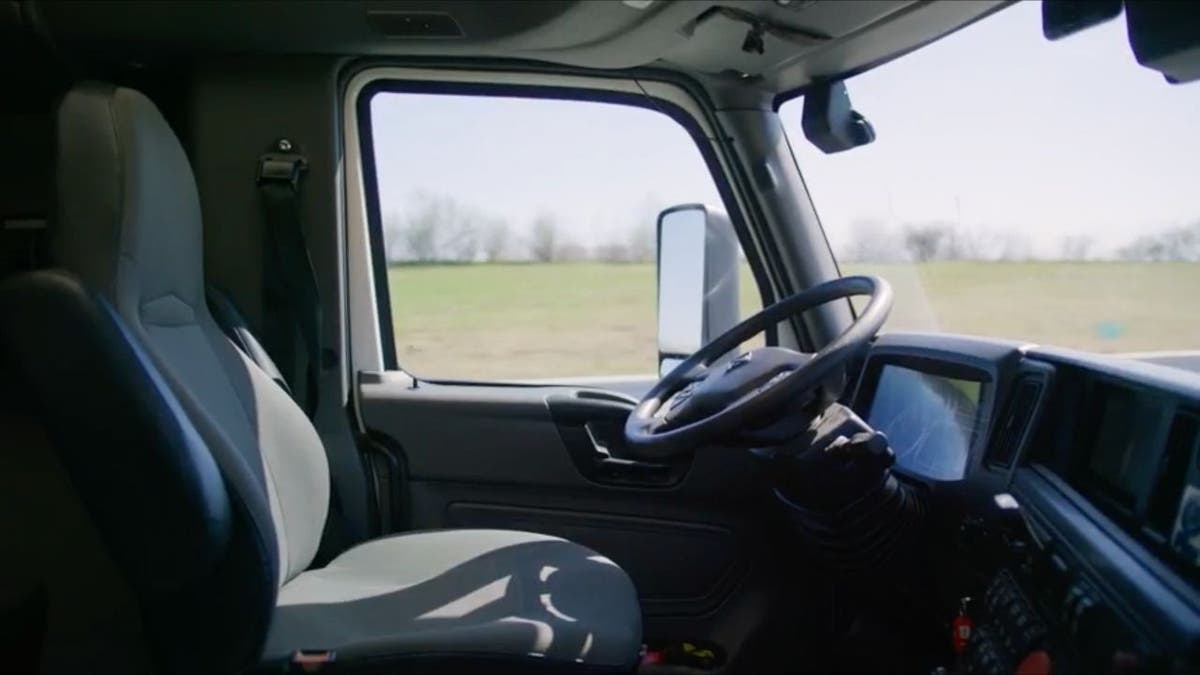
Interior of self-driving truck (Plus Automation)
DRIVERLESS BIG RIG ROBOTRUCKS ARE NOW ON THE ROAD IN THIS STATE
The power of partnerships: OEMs and industry leaders
One of Plus’s biggest strengths is its deep integration with top truck manufacturers, including TRATON GROUP, Hyundai, and IVECO. These companies are working closely with Plus to factory-build, validate, and support autonomous trucks powered by SuperDrive. This OEM-led strategy means that fleet operators will receive autonomous trucks ready for the road, complete with support from trusted manufacturers.
Plus is not working in isolation. The company has formed strategic collaborations with industry leaders like DSV, Bosch, and NVIDIA. These partnerships are designed to accelerate the rollout of autonomous capabilities and ensure that the technology is robust, reliable, and ready for real-world deployment. By working together, they are building an ecosystem that supports fleet operators every step of the way.
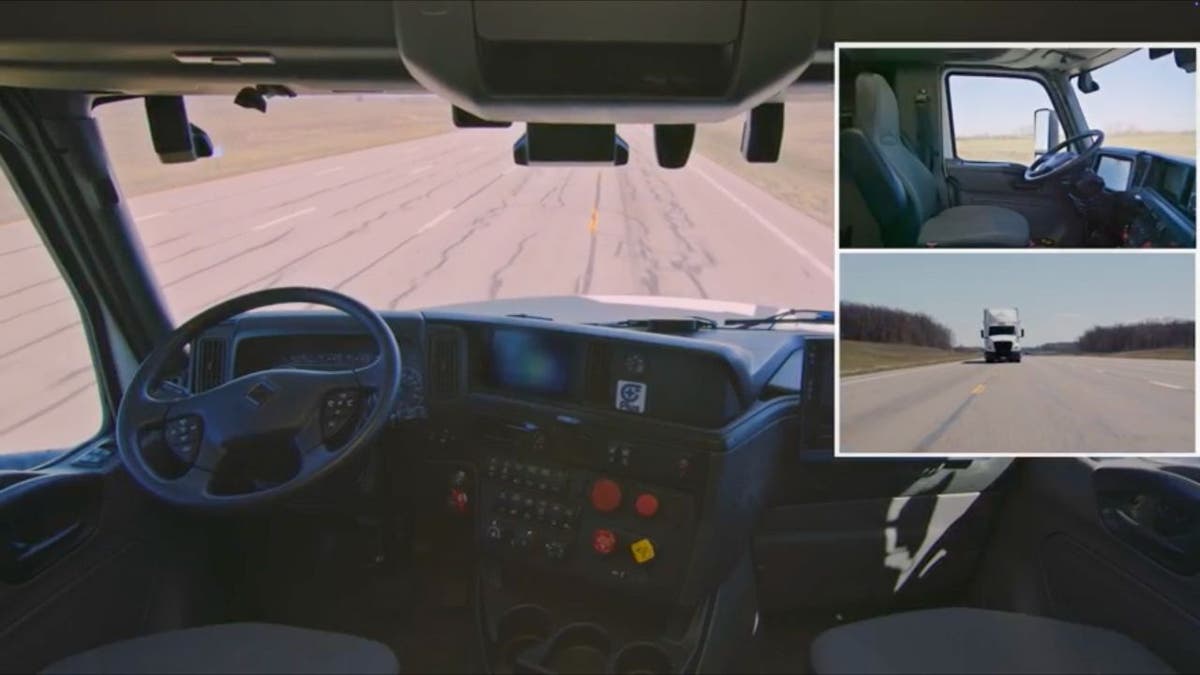
Interior of self-driving truck (Plus Automation)
WOULD YOU HOP ON THIS DRIVERLESS ELECTRIC CITY BUS?
Financial strength and a smart business model
The upcoming merger with Churchill Capital Corp IX is expected to provide Plus with up to $300 million in gross proceeds. This capital will help fund the commercial launch of SuperDrive-enabled, factory-built autonomous trucks in 2027. Plus is entering the public market with a pre-money valuation of $1.2 billion, offering an attractive opportunity for investors interested in the next wave of AI-driven logistics.
What sets Plus apart financially is its capital-light, software-focused model. Instead of building trucks from scratch, Plus provides the AI « brain » that powers them, generating recurring revenue through a driver-as-a-service approach. This means high margins, scalable growth, and a clear path to profitability. The company is led by a team of experienced founders and executives, including CEO David Liu, who has a proven track record of building and scaling technology startups. Liu underscores the company’s broader mission, stating:
« Our long-term vision is to empower fleet operators to run global freight networks with autonomous vehicles that improve safety, enhance efficiency, and reduce costs. We believe the industry is at a critical inflection point, driven by breakthroughs in AI, supportive regulatory momentum, and ecosystem readiness. »
WHAT IS ARTIFICIAL INTELLIGENCE (AI)?
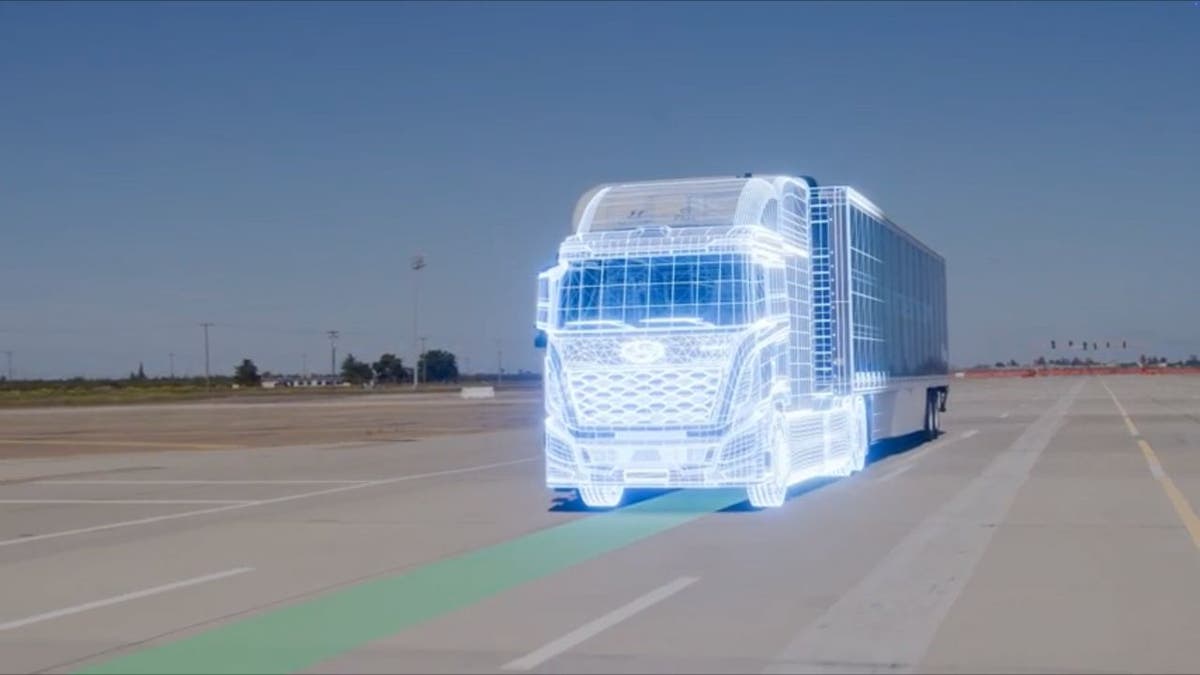
Illustration of AI-powered software being used in a self-driving truck (Plus Automation)
BIG RIGS DELIVER CARGO WITH NO HUMANS AT THE WHEEL
Why autonomous trucking is more relevant than ever
The numbers tell a compelling story. The U.S. and Europe together face a shortage of over 300,000 truck drivers every year, and that gap is only expected to widen as the workforce ages. Autonomous trucks offer a real solution by reducing operating costs, increasing truck utilization, and helping fleet operators keep up with demand. Plus’s SuperDrive system is purpose-built for these challenges. With ongoing fleet trials and partnerships, the company is well-positioned to deliver a safe, scalable alternative to traditional trucking.

Illustration of SuperDrive-enabled trucks (Plus Automation)
15 BEST FEATURES OF AMAZON PRIME YOU MAY NOT KNOW ABOUT
What’s next for Plus and the industry?
Looking ahead, Plus is targeting the commercial launch of its SuperDrive-enabled trucks in 2027, starting in the U.S. and expanding into Europe. With operations in California, Texas, and Germany, Plus is ready to support customers on both sides of the Atlantic. The company’s long-term vision is to empower fleet operators to run global freight networks with autonomous vehicles that improve safety, boost efficiency, and cut costs.

Illustration of SuperDrive-enabled trucks (Plus Automation)
Not everyone is onboard: Skepticism and industry pushback
While Plus Automation’s vision is ambitious, it is not without critics. The autonomous trucking industry continues to face scrutiny from regulators, labor unions, and some logistics professionals who question whether the technology is truly ready for wide-scale deployment.
Regulatory uncertainty remains one of the biggest obstacles. Fully autonomous, driver-out operations like Plus is testing raise complex questions about safety, liability, and insurance. Many policymakers are cautious, arguing that current oversight and laws have not yet adapted to the fast-moving landscape of vehicle automation.
Labor organizations, particularly the International Brotherhood of Teamsters, have voiced strong opposition. They warn that the widespread adoption of autonomous trucks could displace tens of thousands of human drivers and impact job security across the freight industry. These groups are pushing for more transparency, safety assurances, and legal protections for workers as automation expands. In a public statement opposing the rapid rollout of autonomous trucks, Sean M. O’Brien, General President of the International Brotherhood of Teamsters, said this:
« We are not going to sit back and watch as automation threatens the livelihood of millions of truck drivers across America. »
This quote underscores the growing tension between innovation and labor rights. For many in the workforce, autonomous trucking is seen less as a technological leap forward and more as a potential disruption to long-standing jobs and livelihoods.
Even within the logistics industry itself, some operators remain skeptical about the pace of adoption. Questions remain about how autonomous systems will handle unpredictable real-world conditions such as bad weather, complex intersections, and rural roadways where sensor performance can vary.
In response, Plus emphasizes its phased approach to automation. Rather than replacing drivers overnight, the company positions its SuperDrive system as a way to augment human capabilities, improve safety, and reduce fatigue. Its deep partnerships with trusted manufacturers and logistics providers are also aimed at easing the transition and building confidence across the industry.
As Plus prepares to go public, how it addresses these concerns from regulators, workers, and industry stakeholders will be critical. Earning trust may prove just as important as advancing the technology itself.
SUBSCRIBE TO KURT’S YOUTUBE CHANNEL FOR QUICK VIDEO TIPS ON HOW TO WORK ALL OF YOUR TECH DEVICES
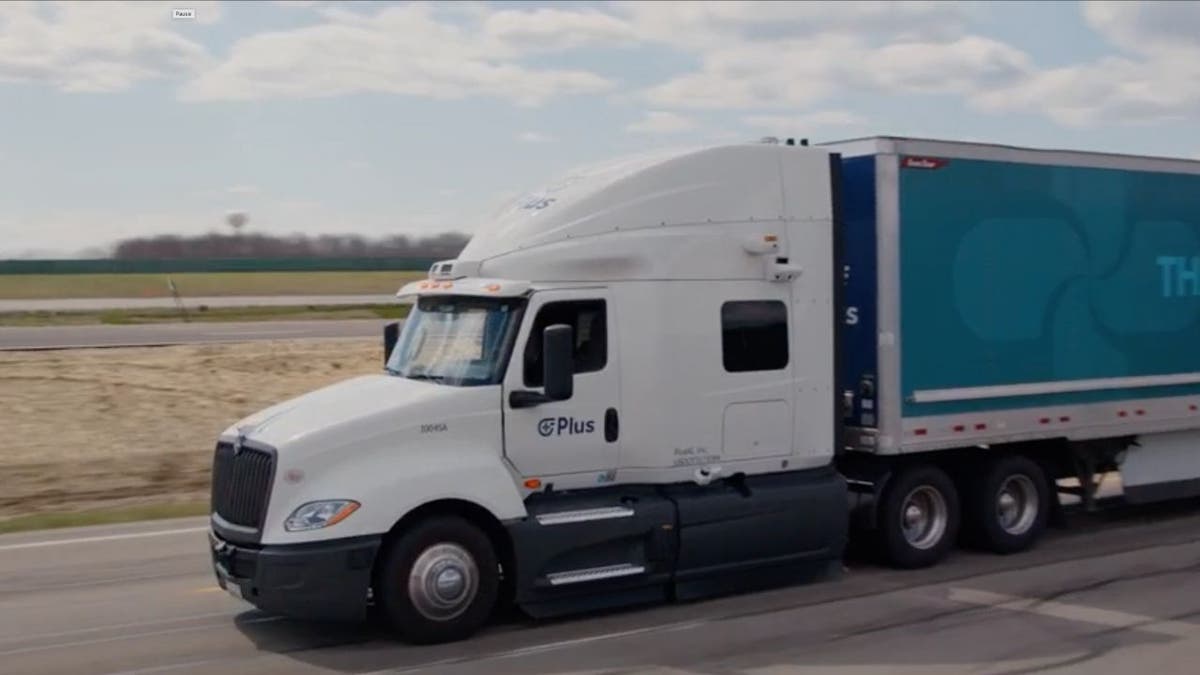
Self-driving truck (Plus Automation)
The long road to autonomous safety
According to Linda Garner-Bunch, managing editor of The Trucker Media Group:
« The idea of developing viable — and safe — autonomous Class 8 trucks has been around since the 1990s, with lots of tech firms tossing their hats in the ring. Many of those firms have failed, often because of a lack of funding. In addition, both the general public and the trucking industry have expressed concerns about the safety of current autonomous technology. After all, an 80,000-pound driverless truck can do a lot more damage than a 6,000-pound passenger car if something goes wrong!
To address this, legislation has been introduced requiring that a qualified human operator be present in autonomous heavy-duty trucks to take over manual control as needed. Even so, autonomous tech is becoming increasingly common in both commercial and private vehicles — think anti-lock brakes, adaptive cruise control, automatic emergency braking, lane assist, camera systems … the list goes on and on.
Autonomy may be the future of the trucking industry, but it’s not ready for full deployment at this time. Adequate funding is needed to ensure that the development and testing of autonomous technology is done properly and safely. The merger between Plus and Churchill Capital Corp IX will help ensure the company has the necessary capital to conduct research, development, and testing while ensuring the safety of everyone on the road. »
Kurt’s key takeaways
Autonomous trucking might still sound futuristic to some, but companies like Plus Automation are proving it’s already becoming a reality. With real-world testing, major industry partnerships, and a smart approach to scaling, Plus is putting itself in a strong position to lead this next chapter in logistics. That said, the journey won’t be without its challenges. From regulatory roadblocks to concerns about the impact on jobs, there’s still a lot to figure out. But if Plus can keep building trust and showing that its tech really does make trucking safer and more efficient, it could help reshape how freight moves across the U.S. and beyond.
CLICK HERE TO GET THE FOX NEWS APP
Are you ready to share the road with autonomous trucks powered by AI instead of human drivers, or do you think there are still hurdles to overcome before this technology should go mainstream? Let us know by writing us at Cyberguy.com/Contact.
For more of my tech tips and security alerts, subscribe to my free CyberGuy Report Newsletter by heading to Cyberguy.com/Newsletter.
Ask Kurt a question or let us know what stories you’d like us to cover.
Follow Kurt on his social channels
Answers to the most asked CyberGuy questions:
New from Kurt:
Copyright 2025 CyberGuy.com. All rights reserved.
